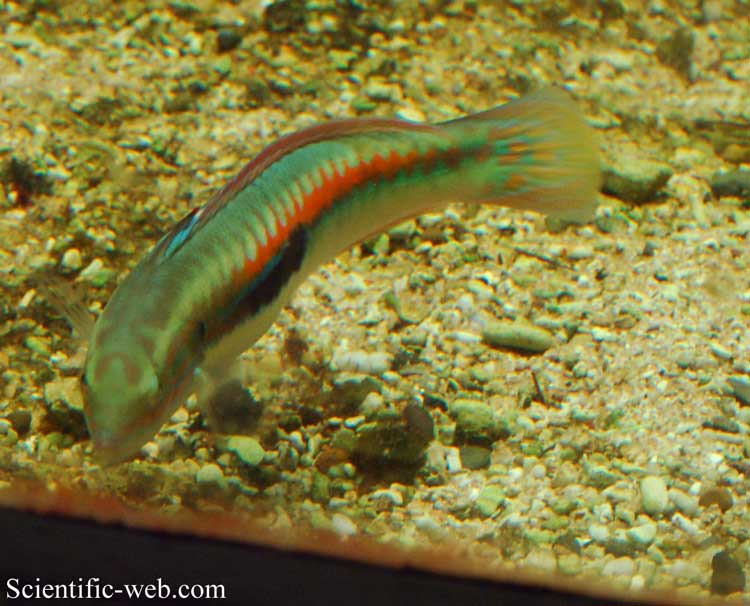Coris julis, Photo: Michael Lahanas Cladus: Eukaryota Name Coris julis (Linnaeus, 1758) Holotype: No types known. Type locality: Genoa, Italy. Synonyms * Coris festiva (Valenciennes, 1839) References * Linnaeus, C. 1758: Systema Naturae, (Systema naturae per regna tria naturae, secundum classes, ordines, genera, species, cum characteribus, differentiis, synonymis, locis. Tomus I. Editio decima, reformata.) Holmiae. 1: i-ii + 1-824. Vernacular names ------- The Mediterranean rainbow wrasse (Coris julis) is a fish in the family Labridae. It can be found in the Mediterranean Sea and in the Atlantic Ocean, from the English Channel to Central Africa. It feeds on algae, amphipods, copepods, sea urchins, polychaete, small shrimps and gastropoda. Description Coris julis is a sequential hermaphrodite, with all individuals being born female, but turning into males after reaching a total length of around 18 cm. The maximum length is 25 cm. There is a marked difference in appearance between males and females, the former being green, blue or brown with white belly, a dark blue spot over the ventral fin and a bright orange band on the side, while the latter have are brown with yellowish sides and white belly.
References * Egidio Patrick Louisy Trainito, ed (2006). Guida all'identificazione dei pesci marini d'Europa e del Mediterraneo. Milan: Il Castello. ISBN 888039472X.
Source: Wikispecies, Wikipedia: All text is available under the terms of the GNU Free Documentation License |
|

